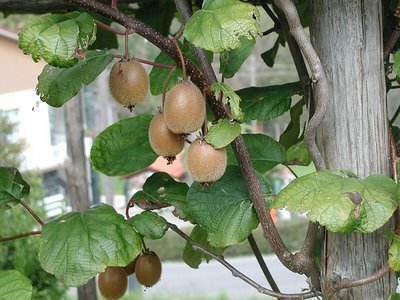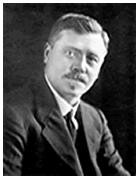I love plant hunters. I find it amazing how many plants that we take for granted come from far and exotic places.
One of my first, romantic plant hunter interests was with Ernest Wilson, better known as 'Chinese' Wilson (1876-1930).
Ernest was born in 1876 in the Cotswolds. At sixteen he was an apprentice gardener's boy. He then moved onto the Birmingham Botanical Gardens. He won the Queen's Prize for Botany.
He then began work at the Royal Botanic Gardens at Kew, where he won the Hooker Prize (named for Joseph Hooker plant hunter extraordinaire) for an essay about conifers.
He turned down the opportunity to become a teacher to become a plant hunter in China for the Veitch & Son Nursery. The rest is history.
At that time, French missionaries had been collecting plants in China. They would dry and ship specimens back to their colleagues in Paris.
Wardian cases were unavailable to poor missionaries. Wardian cases were a type of transportable terrarium, invented by Dr Nataniel Bagshaw Ward, to enable the transport of live plants. Wardian cases would prove invaluable for later plant hunters. More about them later. . .
Needless to say, the dried plant material arriving from the depths of mysterious China was whetting the appetite of nurserymen and botanists in Europe. They needed a knowledgeable, but tough and rugged man for the job of finding live specimens and seeds. Someone who could send back live plants and come back alive himself. Ernest Wilson was the perfect man for the job.
What a hero.
In 1899, on his first expedition, Wilson traveled west, via the Arnold Arboretum in Boston. Here he learned the latest techniques for shipping seeds and live plants under the guidance of Charles Sargent, who was to play an important role in Wilson's life from that point forward.
He arrived in in Hong Kong on June 3rd, 1899, along with an outbreak of plague. Although his journey was slow and the countryside was affected by political unrest, Wilson made his way towards the region of Szemao (Simao), looking for the legendary Dove Tree or Handkerchief Tree, Davidia involucrata. Having travelled halfway around the world, tasked with finding this extraordinary tree, Wilson was to find that it had been cut down in order to build a house.
It was the only one known of its type. According to his diary, he was devastated.
Davidia involucrata, Dove Tree, Handkerchief Tree
But, Wilson continued his search for new and interesting specimens. During this trip he discovered the Kiwi Vine/Fruit - Actinidia chinensis - a native of China, despite its common name (although it is sometimes called a Chinese gooseberry here in England).
 Actinidia chinensis - Kiwi Vine/Fruit or Chinese Gooseberry
Actinidia chinensis - Kiwi Vine/Fruit or Chinese GooseberryIt was while Wilson was collecting other plant specimens, that he stumbled upon an entire grove of Davidia involucrata. He was able to send home a large quantity of seed. He arrived home safely in April, 1902.
Success.
Success.
All in all, Wilson collected thirty-five Wardian cases full of tubers, corms, bulbs, rhizomes, dried and live specimens, of over 900 plants species as wells as seeds from over 300 species. The list of his plant introductions runs into the thousands. And this was only his first trip.
It must be noted that, despite Wilson's heroic effort, the credit for the introduction of the Davidia involucrata was given to Pere Paul Guillaume Farges. He, too, returned to Europe with some seed (reputedly only 38 seeds) in 1897 and his germinated faster than Wilson's. Wilson and his patrons did not realize that it took eighteen months for Davidia seeds to germinate. Luckily they persevered and soon they had thousands of seedlings.
He married his sweetheart, Nellie, in June 1902, but . . .
Wilson was again commissioned to go to China. This time in pursuit of the Yellow Poppywort, Meconopsis integrifolia, reported to grow in the mountains of Tibet.
He left Britain again in January, 1903, on a two year expedition.
But, such was the life of a plant hunter. There is much, much more to tell . . .
I have had a Kiwi vine in my gardens for several years now but have yet to get any fruit. There is a massive and very old vine at the Duchy college in Redruth which is covered in fruit every year. I will try to get a photo next time I am there . . .
Myrtle.
P. S. I can highly recommend The Plant Hunters, by Toby and Will Musgrave and Chris Gardner.




4 comments:
Quite interesting. I may have to check out that book at the library. I love a good story about plants!
Thanks for the book recommendation~
Plant hunters are AWESOME! They are all like the Indiana Jones of the plant world.
Thanks for the great article.
Thanks for the article. Twenty-five years ago I stumbled upon one of Ernest Henry Wilson's book-diaries in the Evanston, Illinois USA library, and fell in love with his adventures and his memory. Now I love spotting a plant identified with the 'wilsonii'. What a courageous man and what a botanist. 'Enjoyed The Plant Hunters, too.
Post a Comment